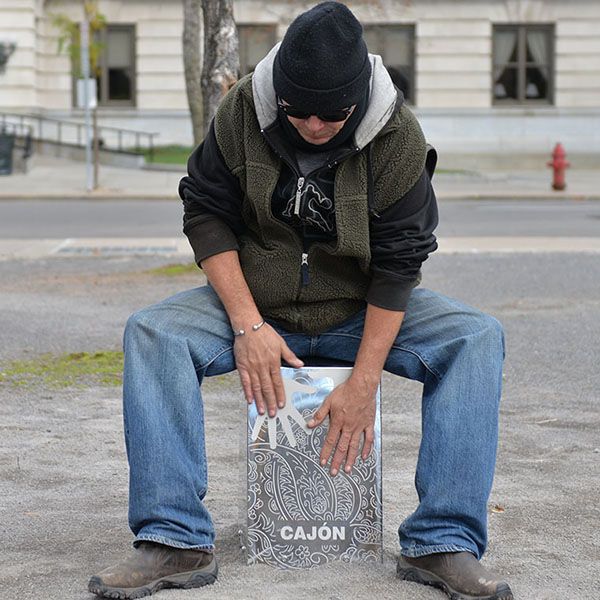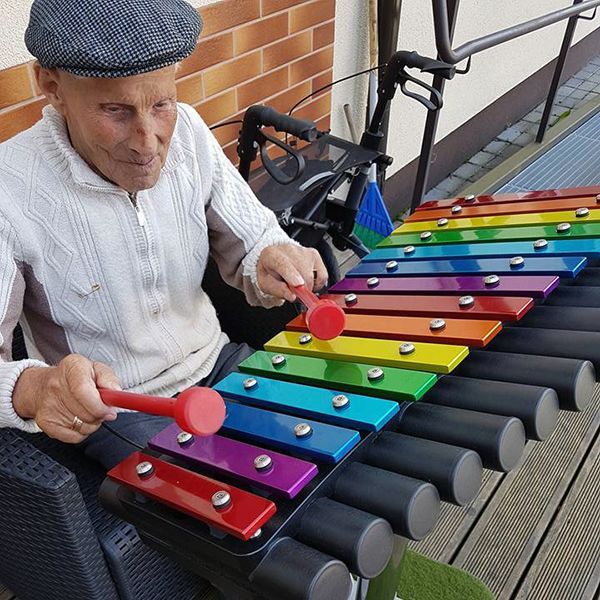Rhythm Healing and the Power of Drum
Drums Through The Ages
From the earliest times, drums and their rhythms have been at the center of social and cultural activities all over the world, in fact, it is said to be man's oldest musical percussion instrument. However, drums have not always been used for creating music or entertainment. In African tribal cultures, drums bore an important role in the use of rituals and religious ceremonies, to express themselves and for communication purposes. Across history, the drum has been used in warfare, both as a means of giving signals to the soldiers and to create noise and drive fear into the enemy. The drum is a deep and sacred element of Native American culture, believing the beat of the drum to be in sync with the heartbeat of mother earth.

Drumming For Health
And now? The primitive drumming circle is emerging as a significant therapeutic tool in the modern technological age. Drums and drumming are increasingly being used as a powerful means of improving health and well-being, personal development, and improving communication by large companies and corporations, music therapists, youth groups, schools, and even prisons.
Music therapists and therapy programs are increasingly using drums and rhythm to promote healing and self-expression. Drumming can be very therapeutic, helping us to get in touch with our inner selves as well as being a fun way to relax and rejuvenate our mind, body, and soul. Recent research indicates that drumming accelerates physical healing, boosts the immune system, and produces feelings of well being. Study results demonstrate that drumming is a valuable treatment for stress, fatigue, anxiety, hypertension, asthma, chronic pain, arthritis, dementia, mental illness, migraines, cancer, multiple sclerosis, Alzheimer's and Parkinson's disease, stroke, paralysis, emotional disorders, ADHD sufferer's, people with learning difficulties, a wide range of physical disabilities as well as for recovering addicts, older people, troubled adolescents, and prisoners.
Drumming induces deep relaxation, lowers blood pressure, and reduces stress. Moreover, drumming promotes the production of endorphins, the body's own morphine-like pain killers, and can thereby help in the control of pain and those suffering grief. Drumming and rhythm is such a powerful tool as it permeates the entire brain. The sound of drumming generates neuronal connections in all parts of the brain even where there is significant damage or impairment such as in ADHD. The process of drumming engages both the linear, rational left side of the brain (in the learning of polyrhythmic parts and the analysis of how rhythms fit together) and the creative, intuitive right side of the brain (in the entrainment of rhythm in the body and the appreciation of the music). The two brain hemispheres often emanate different wave frequencies; drumming, like deep meditation, brings them into synchronization, creating feelings of euphoria and flowing creativity.
Group drumming can complement traditional talk therapy methods. Players can drum out their feelings without saying a word or without having to reveal their issues. Drumming circles, ensembles, and making music together in a group can be a unifying experience, encouraging self-expression and camaraderie as well as lots of hands-on fun!
Drumming together breaks down barriers, builds personal and team confidence, it releases stress, motivates, and creates spontaneity.
Drumming Improves Communication
Many companies and corporations are searching out consultants to organize drumming workshops as team building programs. The workshops aim to encourage employees to work more effectively - playing drums together becomes a metaphor for how people work together as a team. The workshops aim to improve communications, break down barriers, boost morale, motivate, re-energize staff, cut stress, and increase productivity. As barriers are broken down and the junk falls away, people become more honest with each other, and conflicts are resolved, leaving the team more in tune with each other.
The rhythm and order of drumming even provides a creative outlet for even the most hardened individual. Drumming workshops have been used in prisons and with young offenders - providing creative ways to re-channel negative energy, diffuse anger, and build team spirit through the power of percussion.
Many community groups, youth groups, and centers have introduced informal drumming workshops to bring children and adults together in a fun-filled, cooperative environment where they build community, create music, and learn a new skill that they can even take away and share with their friends. Drumming captures the heart of most who encounter it. Drummers don't have to worry about melody or chords and absolutely NO previous musical experience is required.
So it seems the drum continues to play a central role in our society. Why not find the rhythm and beat of your own drum? There are many drumming communities across the country promising anxiety release, physical toning, spiritual growth, creativity and personal empowerment whilst being a whole lot of fun - who couldn't use that?
Drumming Outdoors
There’s nothing like drumming outdoors! The Conga Drums, Rainbow Sambas, Babel and Cajon Drums from Percussion Play allow you to enjoy drumming in the great outdoors and create some great music alone or with friends. Outdoor Drums are a fantastic alternative playground activity, boosting their hand to eye co-ordination and inviting children to create real funky beats. Their unique look colorful style and innovative robust design provide children with hours of fun.
(Not Just For Children....)
